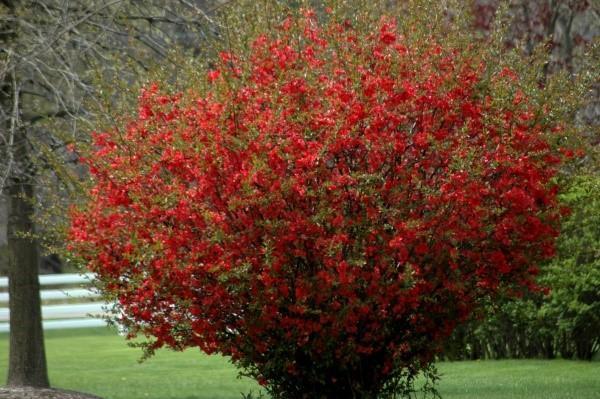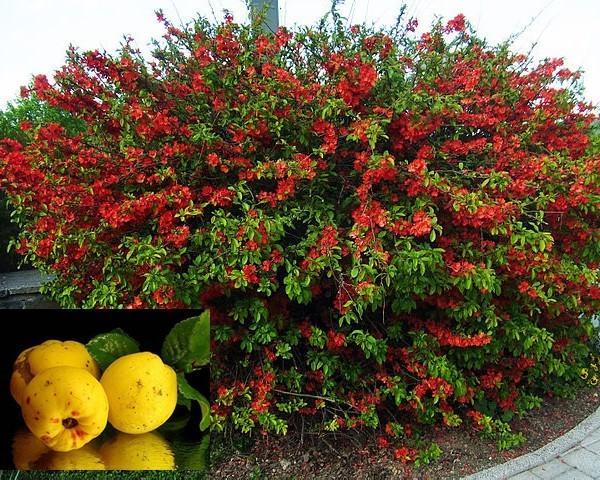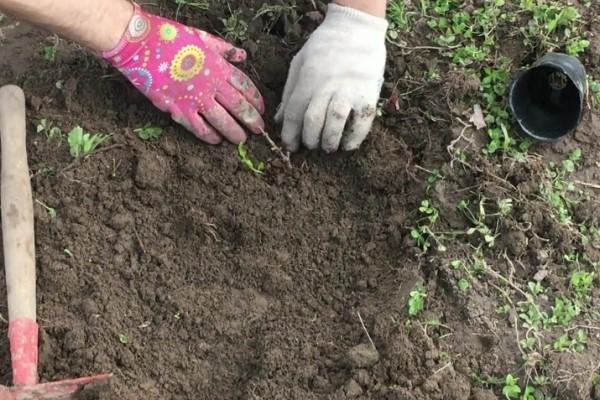What you need to know about the characteristic features of Japanese quince
 Japanese quince is a unique plant. Despite the fact that quince is considered a heat-loving crop, this variety has a rather persistent character, which makes it possible to grow a shrub in almost any climate. What is japanese quince and how to get a gorgeous flowering shrub on your site?
Japanese quince is a unique plant. Despite the fact that quince is considered a heat-loving crop, this variety has a rather persistent character, which makes it possible to grow a shrub in almost any climate. What is japanese quince and how to get a gorgeous flowering shrub on your site?
Even frosts of minus 30 degrees cannot cause significant harm to the Japanese quince, thanks to which it winters well, retaining its decorative appearance and annual fruiting.
What does the plant look like?

A bush has a special appearance during flowering: at the end of May it is covered with rather large, up to 5 cm in diameter, inflorescences painted in red, pink or white, depending on the variety. You can admire them for three whole weeks.
Japanese quince is a long-liver and can grow in one place for more than 60 years, and begins to bear fruit from the third year of life.
Helpful planting tips
 All that Japanese quince needs is a well-chosen place and proper care, otherwise it is not capricious, but it will delight you with unusual bright inflorescences and fruits with an original taste.
All that Japanese quince needs is a well-chosen place and proper care, otherwise it is not capricious, but it will delight you with unusual bright inflorescences and fruits with an original taste.
The shrub should be planted in a quiet area, where there are no drafts, but there is good lighting. The best place for him is the south side of the house or the south slope, if the garden is located in a hilly area. They start planting seedlings in the spring, but they prepare the planting hole in the fall, adding to it:
- sand;
- leafy ground;
- compost;
- phosphorus-potassium fertilizers.
These components make it possible to create a moisture and air permeable nutrient mixture in which the quince will actively grow and develop.
Care features
 In general, it is not difficult to care for the compact bush of the Japanese beauty quince, but there are some points that you should pay attention to.
In general, it is not difficult to care for the compact bush of the Japanese beauty quince, but there are some points that you should pay attention to.
For the winter, young plants are subject to compulsory shelter. To do this, they are covered with spruce branches or covered with fallen leaves. Also, adult bushes need additional protection if they are grown in the northern regions. Large-sized specimens are wrapped with a special covering material or a “cap” is constructed from cardboard boxes.
Pruning the bush is no less important, although it is this moment that is most unpleasant for gardeners due to the presence of sharp thorns. Despite this, the quince needs to be sanitized annually, removing frozen and dry branches so that the bush does not lose its appearance.
But it is better to start forming the crown no earlier than the bush reaches the age of 4 years. They do it as follows:
- first, the root shoots are removed, leaving 2-3 strong shoots for replacement;
- then cut out all creeping and growing vertically.